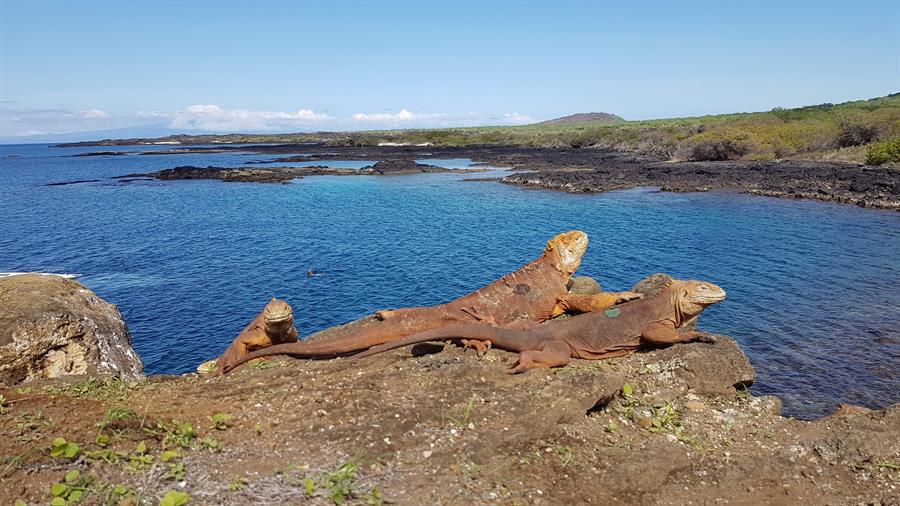
These reptiles, which can measure up to one meter, will be monitored in the release area and their adaptation to their new habitat can be assessed.
Technicians from the Galapagos National Park in Ecuador have reintroduced 461 terrestrial iguanas to the island of Santiago, another in the Ecuadorian archipelago, in order to bring these reptiles back to a habitat from which they have disappeared.
The ecological restoration project for the Galapagueñas iguanas, belonging to the species Conolophus subcristatus, began about 20 years ago on the island of Santiago.
It was developed in parallel with the eradication of predatory species such as pigs, donkeys and wild goats, which feed on all types of vegetation and, according to experts, changing the habitat of endemic animals in the Galapagos Islands.
You may be interested: the sea lion helped from the Salvadoran coast suffers from “infectious bronchitis”
A first group of specimens was inserted in January 2019 on the island and their adaptation benefited the ecosystem in which also live the Darwin’s Chinese, a colony of seals, sea lions and flamingos, among other native species.
The terrestrial iguanas that were released this time in Santiago were captured on North Seymour Island.
The director of the Galapagos National Park, Danny Rueda, explained that being herbivores, because they eat cactus leaves, fruits, thorns and flowers, they have the function of dispersing the seeds in the ecosystem and are able to restore the ecological integrity of the island.

“The goal of reintroducing iguanas to Santiago Island is to bring this reptile, which disappeared more than 200 years ago, back into its natural ecosystems,” added the director of the Galapagos National Park. Photo: EDH / EFE
The Ecuadorian Ministry of Environment and Waters said that the operation involved guards of ecological parks, in charge of catching reptiles, characteristic because they are yellow in their bags. The goal is to maintain your mood to avoid stressing the species.
One of the specialists, Jean Pierre Cadena, said that it is a delicate species and difficult to handle.
“We are trying to make sure that the species does not feel threatened, with biosecurity measures, so that the animal does not have so much stress at the time of capture,” he said.
Prior to their release on the island of Santiago, the 461 terrestrial iguanas underwent a quarantine and morphometric data recording process that included a physical examination, deworming and identification chip marking.
In this way, these reptiles, which can measure up to one meter, will be monitored by the parks in the release area and their adaptation to their new habitat can be assessed.
The technicians of the National Park hope that its establishment will be fruitful, after verifying at the end of 2020 during the monitoring works of the first released specimens, juvenile specimens, burrows and possible nesting areas – they lay between one and twenty eggs – in addition to checked your food availability
Read also: Network scandal over a man harassing a sea elephant on Metalío beach
Management measures implemented in these islands, in particular related to the control and elimination of introduced species, such as rodents in North Seymour (2019) and pigs, donkeys and goats in Santiago (2002 and 2006), have allowed the population of terrestrial iguanas of these unique island ecosystems remain healthy.
The Galapagos Islands, listed in 1978 as a UNESCO World Heritage Site for the formation of a unique terrestrial and marine ecosystem in the world, are located about 1000 kilometers from the Ecuadorian mainland coast.